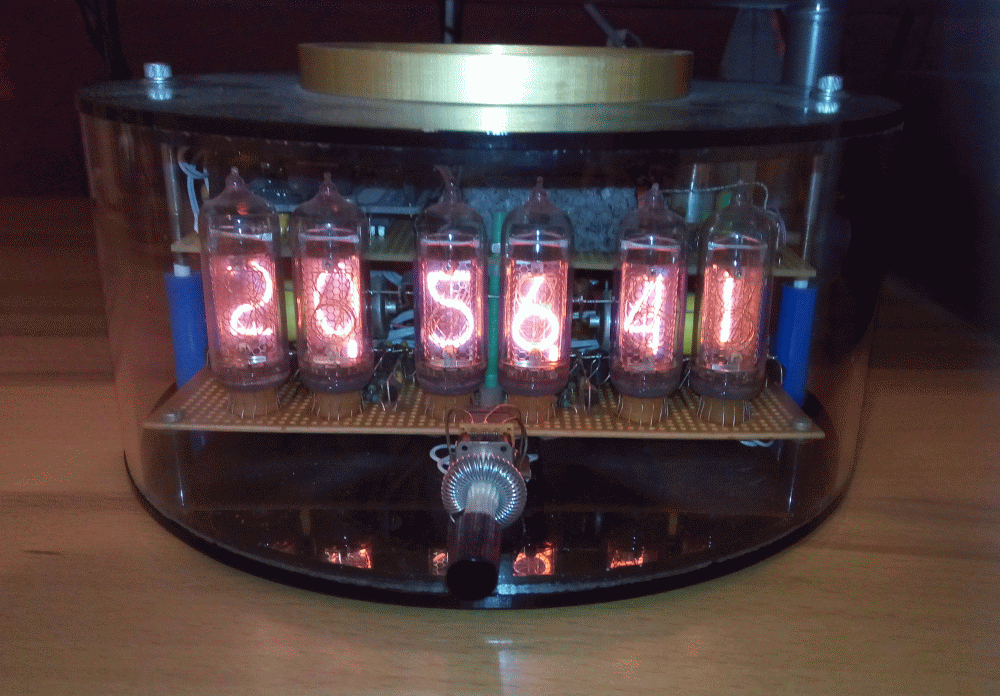
Arduino-based "Nixie"-clock
Being inspired by some articles at the internet, I liberated
an old Russian military frequency counter from my attic which had been sitting there for years and reused its famous "Nixie" tubes to build a retro-look clock controlled by an Arduino™ board. Below are some links to various items from that project.
Software snippets/libraries (tested on Arduino™ Leonardo & Nano):
To design your own Arduino™-based atomic clock, you may implement the C-library provided under the below link as a beginning. The program decodes the signal coming from a "DCF77" receiver. In order to work, the two none-standard libraries "Time" and "BitArray" must be loaded, too. Both are already added to this package. Please consult the Arduino™ project page in order to learn how to add libraries to the Arduino™ programming environment.
A DCF77-signal decoder library.
Hardware:
In semiconductor age driving a Nixie tube can be quite a challenge. Nixies should not be multiplexed in order to prevent them from aging quite rapidly. Hence, hardware efforts are typically big. In addition, there is the issue of having to control voltages higher than most nowadays ICs can handle. In the case of my clock I decided to apply a slightly different concept, using a low-power MOSFET for both, high-voltage switching and data buffering. This approach somewhat resembles a DRAM memory, where information is being held temporarily by charged capacitors which have to be refreshed at some interval. The resulting design is quite cheap, compact and robust. The sketch under the below link is only meant for inspiration. There surely are many other possible ways of implementation. If you are interested in the code controlling this hardware or have questions related to the concept itself, just send me a message.
A MOSFET-based NIXIE tube driver/data storage.
Other:
Looking for a good-sounding and freely available clock-chime at the internet actually turned out to be quite hard. Perhaps I was too demanding ...Whatever, here comes my self-synthesized sound of a Grandfather's clock chiming 12 (WAV / mono / 16bit resolution / 44.1kHz sampling rate / max. frequency 3kHz / 29.5s / each chime 2s + 0.5s seconds of silence).